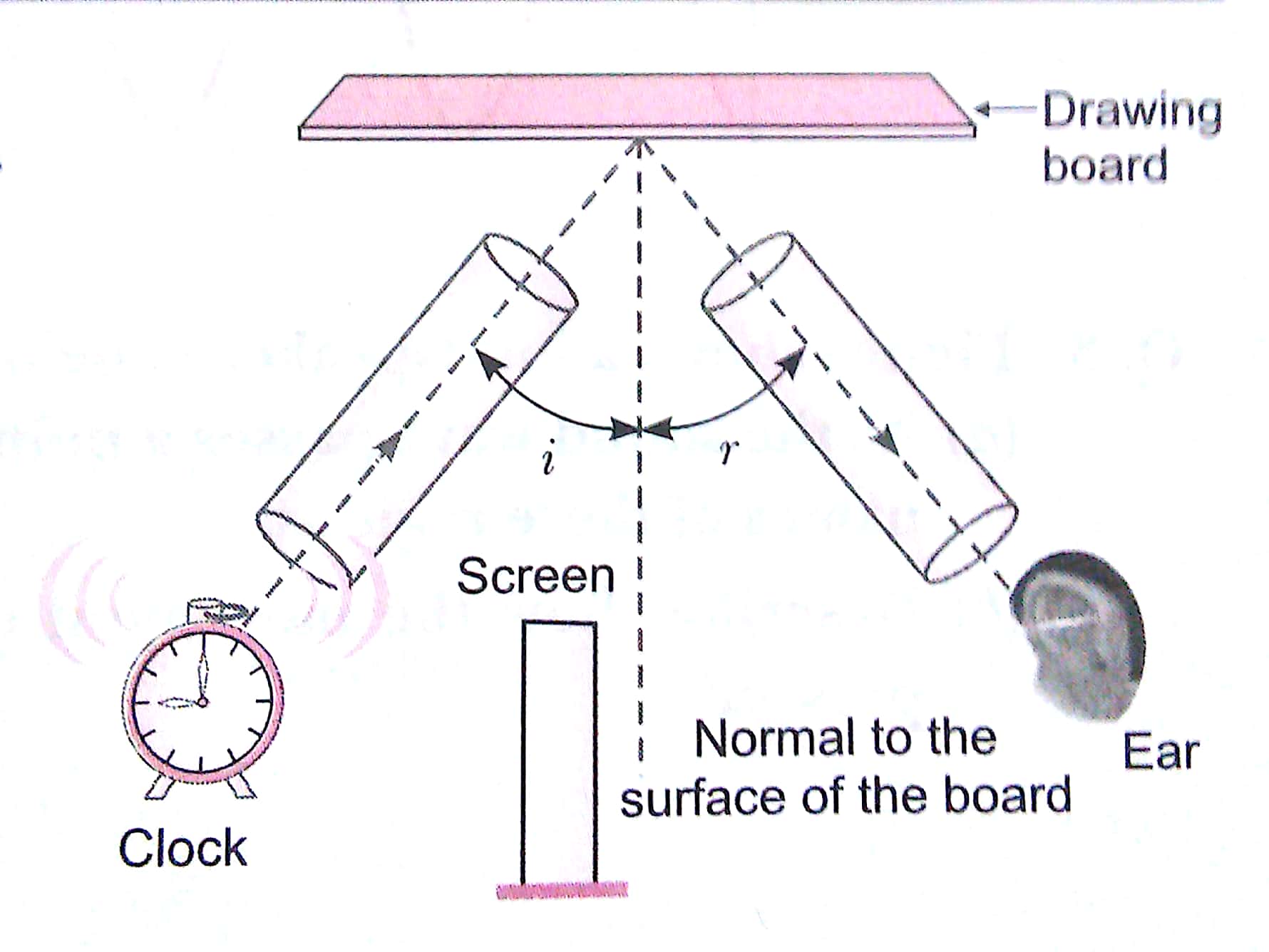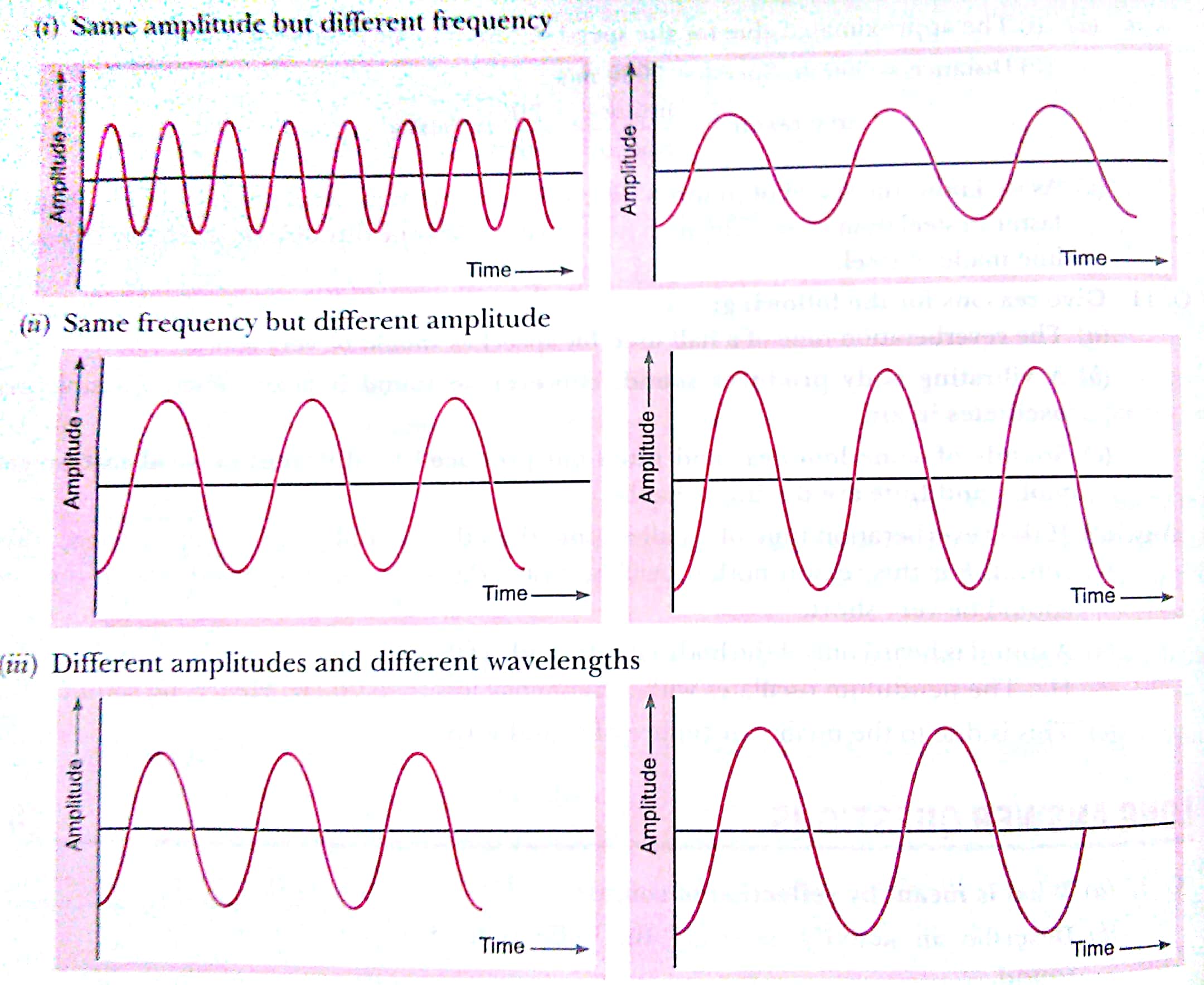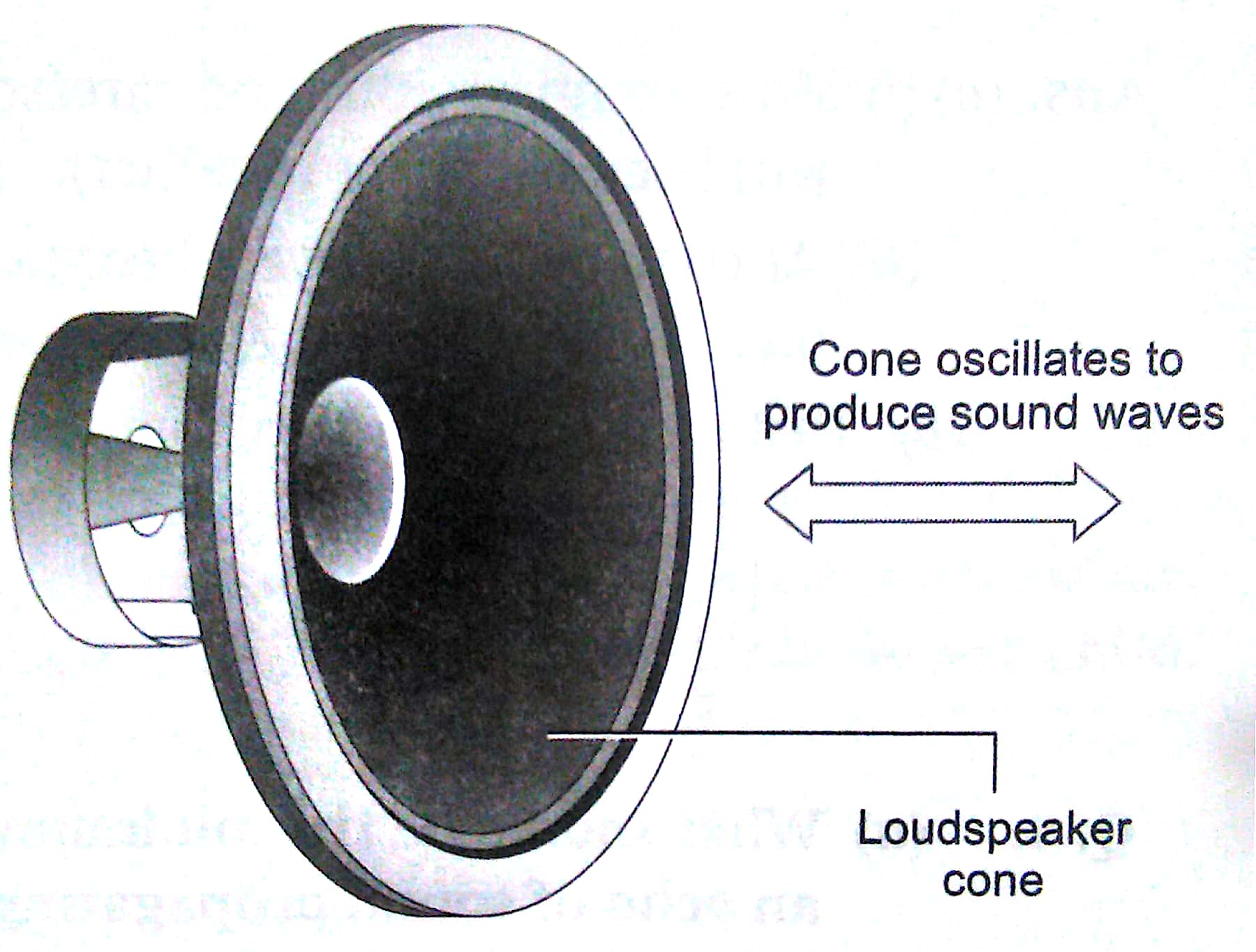Long Answer Questions - 5 Marks
Q1. (a) What is meant by reflection of sound?
(b) Describe an activity to study the reflection of sound.
(c) State the laws of reflection of sound.
Ans. (a) Reflection is a phenomenon of reversion of a wave going from one medium to the same medium after striking the second medium. Sound wave also experience reflection like other waves.

(b) To observe the reflection of sound, take a drawing board and fix it on the floor. Put two metallic or cardboard tubes as shown in figure. These tubes are making some angle with each other. Put a clock near the end of one tube and a screen between the two tubes so that sound of clock may not be heard directly. The sound (like tick-tick) waves pass through the tube are reflected by the drawing board. The reflected sound waves enter the second tube and are heard by the ear placed in front of the second tube.
(c) Laws of reflection:
(i) The angle of incidence is equal to the angle of reflection.
(ii) The incident ray, the normal to the reflecting surface at the point of incidence and the reflected ray, all lie in the same plane.
Q. 2. Represent graphically any two separate diagrams in each case:
(i) Two sound waves having the same amplitude but different frequencies.
(ii) Two sound waves having the same frequency but different amplitudes.
(iii) Two sound waves having different amplitudes and also different wavelengths.
Ans.

Q3. Figure shows a loudspeaker cone oscillating to produce sound waves:
(a) As the sound wave passes a point, it produces regions of higher and lower pressure. State the names of these regions.
(b) Describe how the movement of the loudspeaker cone produces these regions of different pressure.
(c) State the effect on the loudness and pitch of the sound from the loudspeaker when
(i) the amplitude increases but the frequency of the sound stays the same,
(ii) the amplitude stays the same but the frequency increases.

Ans.
(a) Regions of higher pressure: Compressions
Regions of lower pressure: Rarefactions
(b) Production of regions of higher pressure: when the loudspeaker cone moves forward, in the direction of propagation of wave, it pushes the layer of air closer. This air layer pushes the next air layer, and process goes on. In this way, the layers of air near the cone are compressed to form a compression, which is a region of higher pressure.
Production of regions of lower pressure: when the cone moves backward, away from direction of propagation of wave, it leaves a region of low pressure and the air layers move apart to form a rarefaction.
(c)
(i) Loudness increases as greater the amplitude of sound waves, louder the sound will be pitch remains same.
(ii) Loudness remains same.
Pitch increases as the pitch of a sound is directly proportional to its frequency.

